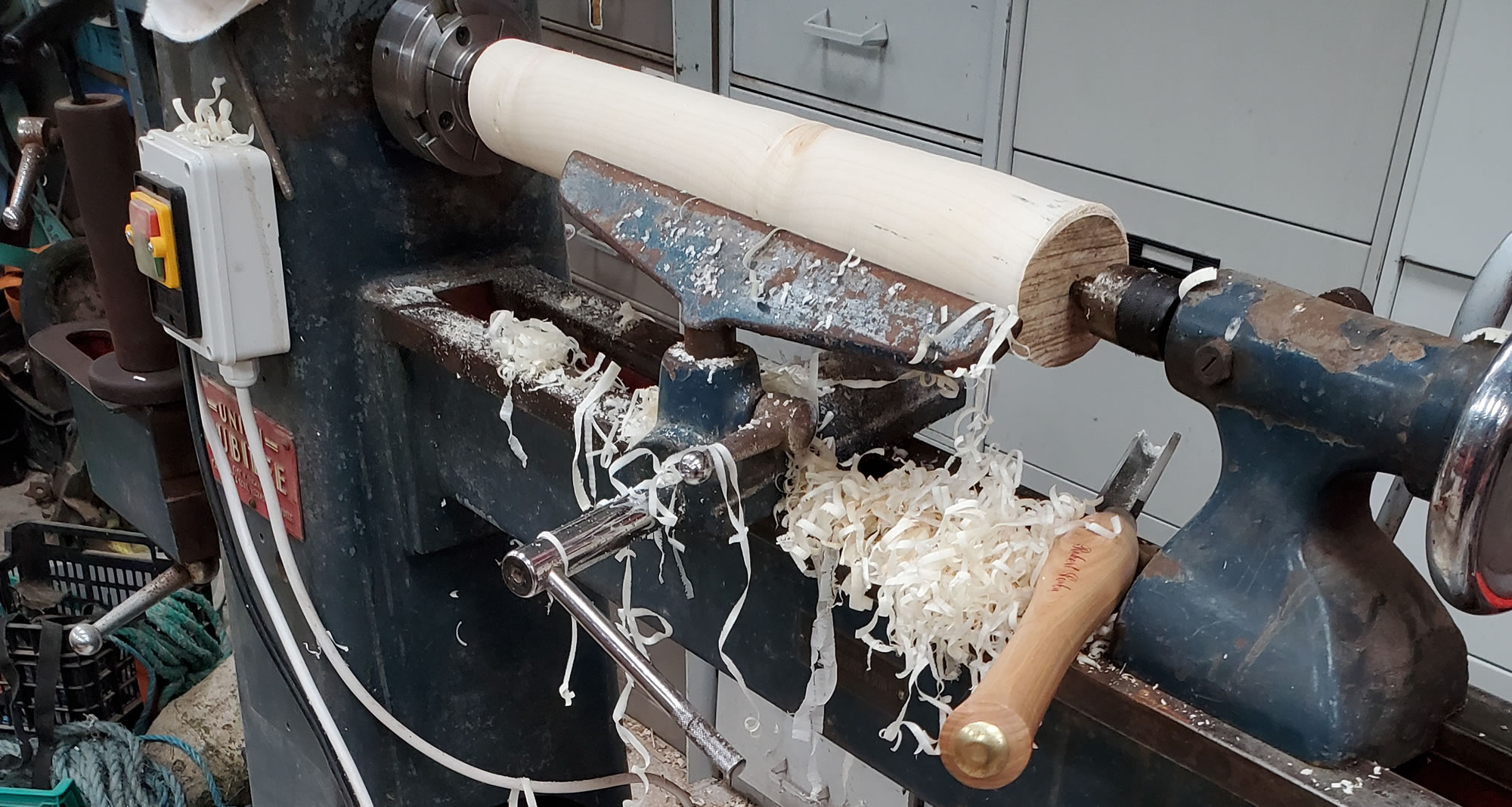Never has ‘All the gear and no idea’ been so apt for my wood turning exploits. Plenty of good intentions that are never acted upon came to a head for two reasons.
- The new Lancashire Woodturners group has now met twice and I have attended twice. Two very enjoyable nights watching lathe demonstrations from professional woodturner Chris and chatting with some very experienced amateurs still wasn’t enough to actually turn on my trusty old lathe and have a go…. until today.
- This week I was honoured to have a visit to the farm from our MP Katherine Fletcher. We tried repeatedly to do the ‘official’ discussions but couldn’t help using up most of our allocated time talking about a shared passion making things from wood. Frustratingly for both of us, time wouldn’t allow for her to show me her skills on the lathe.
However, non of this has been enough to shame me into turning on my trusty old Albion Jubilee and making something specific… until today!
I decided that, as a project (despite it being much easier and cheaper to buy them), I would do the prep to make some tool handles for interchangeable bowl gauges. The point being the handles will need to be specific shapes and sizes which will stop me just playing aimlessly making shavings.
First job was to split a big enough lump of wood into quarters. On a mill this is an easy task but a bit more care is needed with a splitter. The wood was only felled a month or so ago so is still very wet.
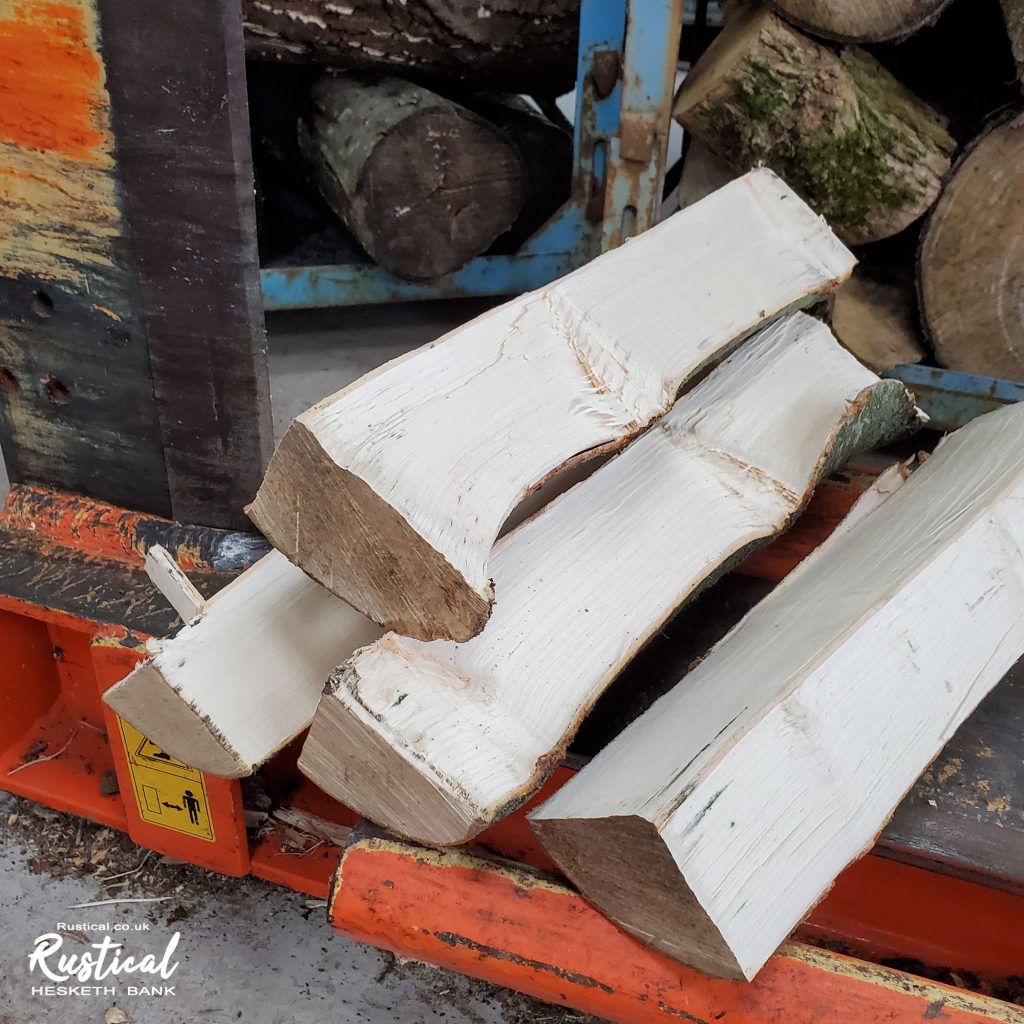
Once split, I removed all the obvious excess wood on a bandsaw so it is as good as it can be before it gets mounted on the lathe.
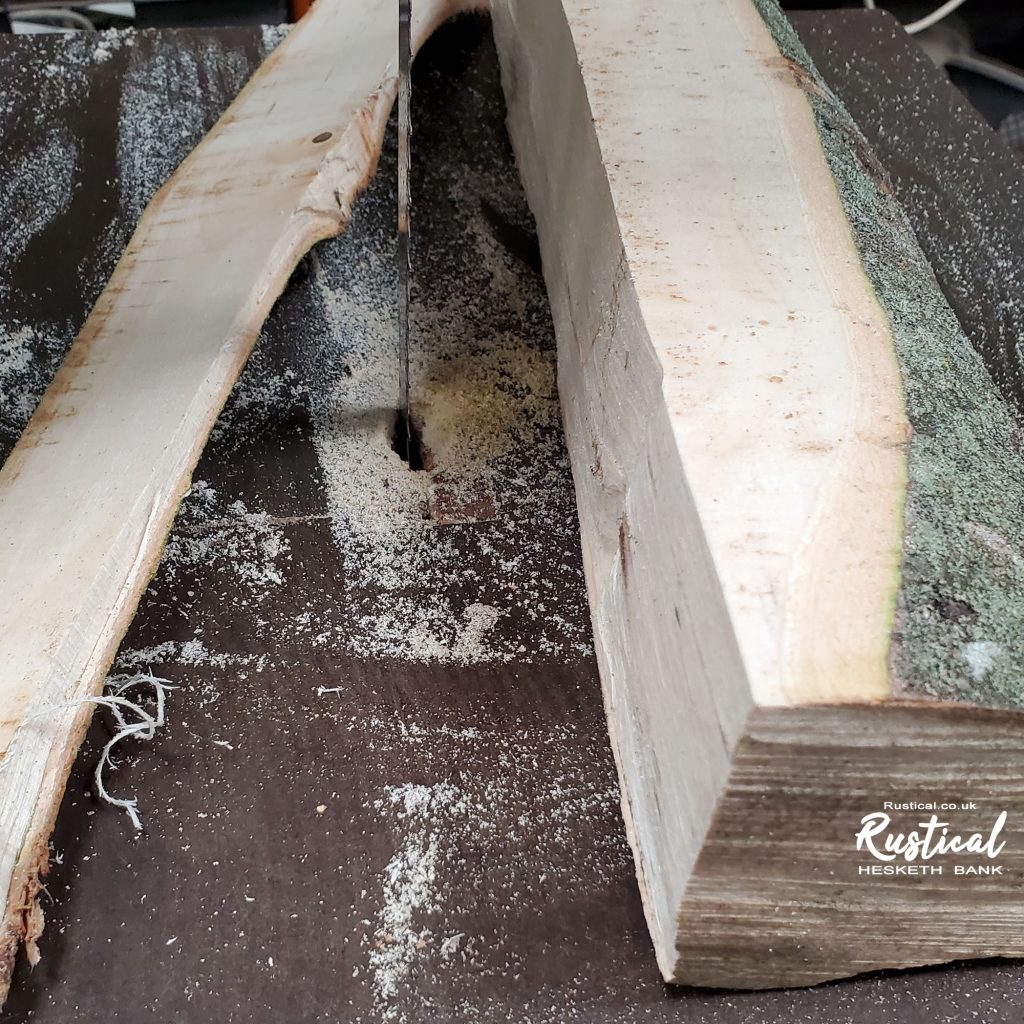
After marking the approximate centres, each billet was put onto the lathe ready for roughing out into rounds ready for drying.
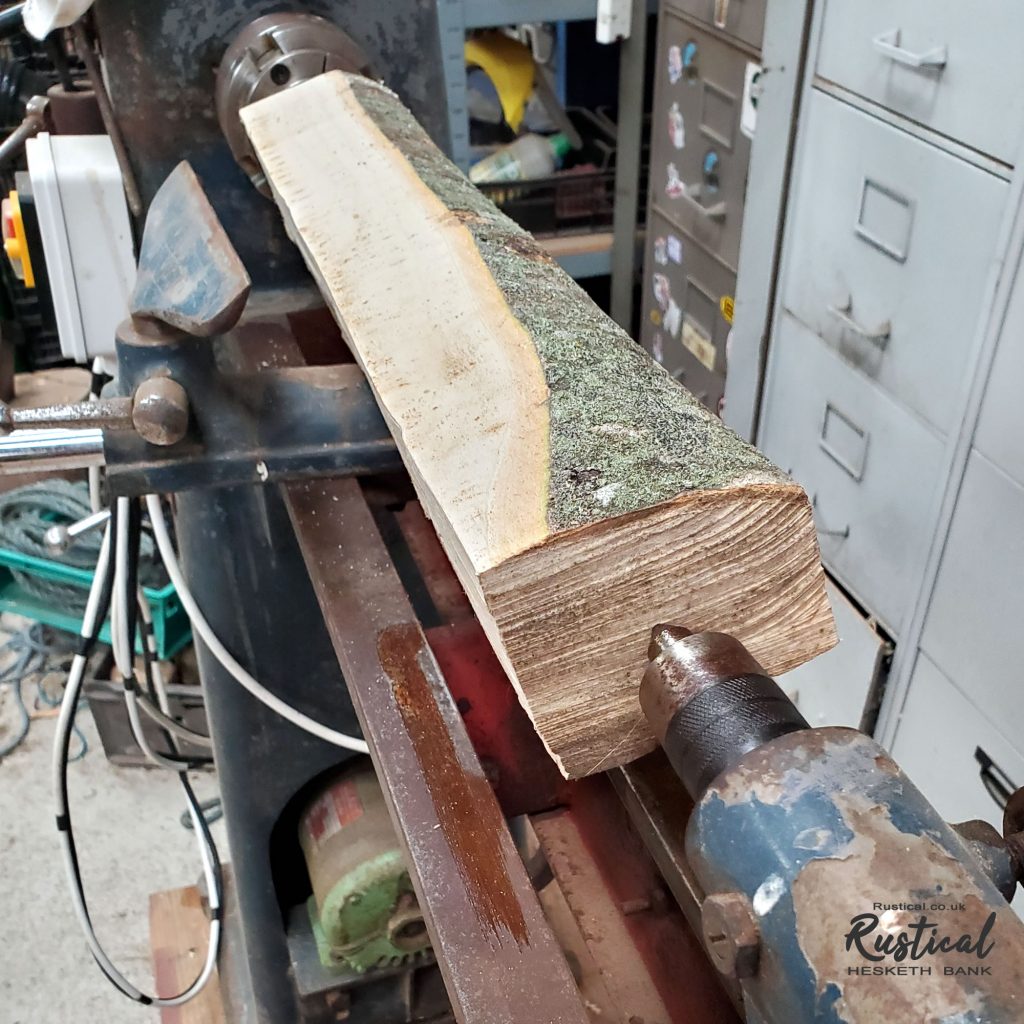
With a sharp roughing gauge and due care it does not take that long to get them all turned down into cylinders.
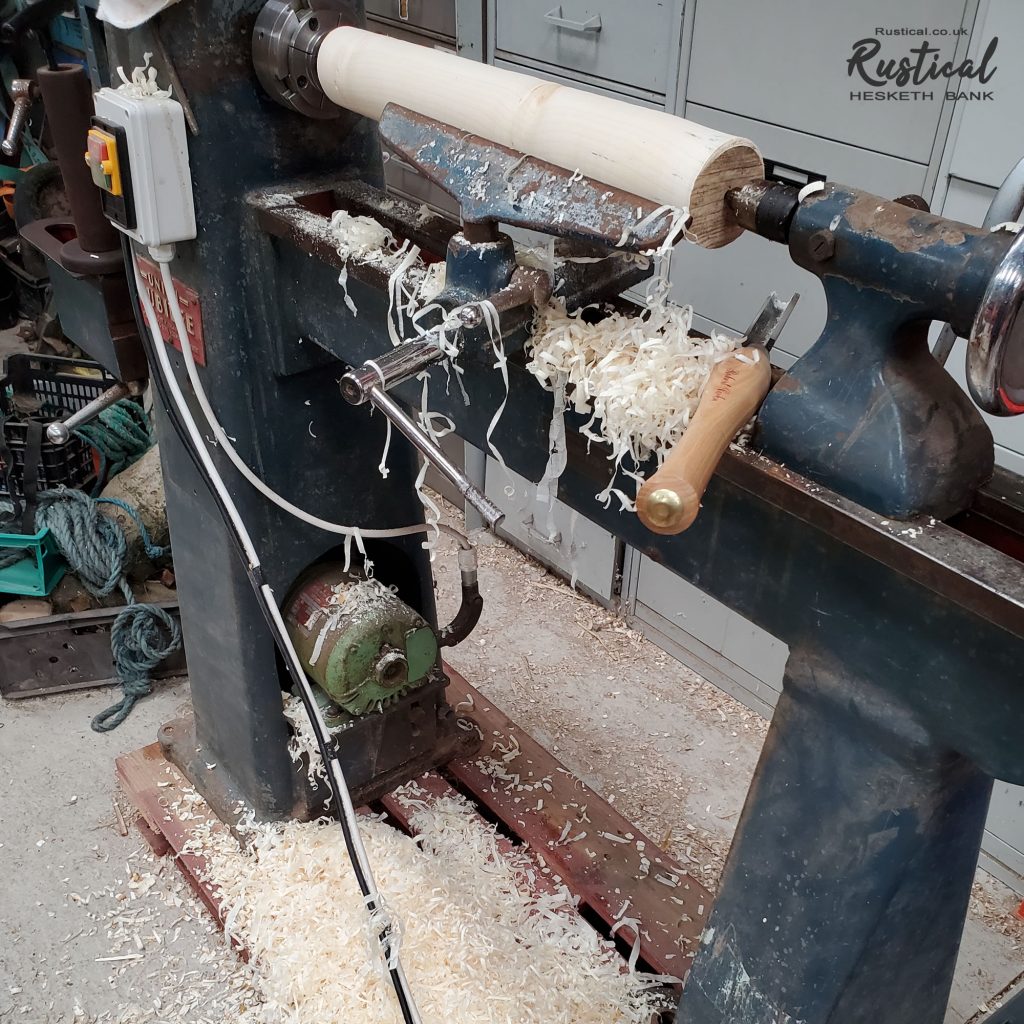
Once all four have been roughed out they need to have the end grain sealed with PVA glue to slow down the rate at which they dry to try and avert splitting as they season.
To be continued (hopefully!)

